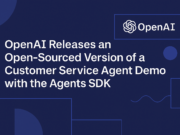We dive into the difference between frontend and backend in web programming.
Table of Contents:
Frontend vs Backend
In web development, the terms “frontend” and “backend” represent two distinct and complementary sides of a web application. Each plays a crucial role in delivering the seamless digital experiences that users interact with every day, from online shopping to social media platforms. Whether you’re a budding developer or simply curious about how websites work, it’s important to understand the differences between these two aspects, their key technologies, and how they work together to create fully functioning web applications.
Within this content, we’ll dive deep into both frontend and backend development. We explore their unique roles and how they combine to create the websites and web applications that shape our digital world.
What is Frontend Development?
Definition
Frontend development refers to the client-side of a web application—the part that users see and interact with directly in their web browsers. When you visit a website, everything from the layout, colors, fonts, buttons, and overall design is a result of frontend development.

Core Responsibilities
A frontend developer’s primary responsibility is to ensure that users have an intuitive and visually appealing experience when using the website.
- Designing the User Interface (UI): The frontend developer translates the website’s design into code, using HTML, CSS, and JavaScript to create visually engaging interfaces.
- Ensuring Responsiveness: Today, websites must function across various devices, from desktops to smartphones. Frontend developers ensure that the site adjusts seamlessly to different screen sizes.
- User Experience (UX) Considerations: Beyond just visual elements, frontend development also involves crafting an easy-to-use, intuitive experience. For example, ensuring that forms are easy to fill out or that navigation menus are simple and functional.
- Client-Side Logic: Frontend developers handle simple data validations and manipulations in the browser using JavaScript. For example, ensuring that a user enters a valid email address into a form.
Key Technologies in Frontend Development
Frontend development relies on several key technologies.
- HTML (HyperText Markup Language): HTML is the foundational language of the web, responsible for structuring content. Everything you see on a web page, such as headings, paragraphs, images, and links, is marked up with HTML.
- CSS (Cascading Style Sheets): While HTML structures content, CSS is responsible for styling it. CSS controls the visual presentation of the website—its colors, fonts, layouts, and overall appearance.
- JavaScript: JavaScript brings interactivity and dynamic features to websites. It allows frontend developers to create interactive features like image sliders, form validation, and content that updates without refreshing the page (using AJAX or Fetch API).
- Frontend Frameworks/Libraries: To streamline development, modern frontend developers often use frameworks or libraries such as:
- React: A popular JavaScript library for building user interfaces, particularly single-page applications (SPAs).
- Angular: A full-fledged front-end framework maintained by Google, designed for building complex web apps.
- Vue.js: Another JavaScript framework that emphasizes simplicity and flexibility.
The Role of Frontend in Web Development
Frontend developers are the architects of the user experience. They transform design mockups into functional code, ensuring the website looks and feels great while remaining accessible and responsive across devices. Whether you’re browsing a blog or interacting with a complex web app, every interaction is a product of frontend development.
What is Backend Development?
Definition
Backend development refers to the server-side of a web application. Unlike the frontend, which is user-facing, the backend handles the behind-the-scenes logic, data processing, and communication with the database.

Core Responsibilities
A backend developer focuses on making sure the website functions as intended.
- Managing Databases: The backend interacts with databases to store and retrieve data, such as user information, product details, or blog posts.
- Handling Server-Side Logic: Backend developers write the business logic that governs how the website processes requests, performs calculations, or manages workflows.
- Ensuring Security: Protecting sensitive data, such as passwords and personal information, is a critical role of the backend. Developers implement secure authentication methods, data encryption, and authorization protocols.
- APIs and Communication with Frontend: The backend communicates with the frontend through APIs (Application Programming Interfaces). When a user performs an action, such as submitting a form, the frontend sends the request to the backend, which processes it and returns the appropriate data or response.
Key Technologies in Backend Development
Backend development encompasses a wide range of programming languages, frameworks, and tools.
- Programming Languages:
- Node.js (JavaScript): JavaScript’s presence in backend development, particularly with Node.js, allows developers to use a single language across the full stack.
- Python: Known for its readability and versatility, Python is used in frameworks like Django and Flask to handle server-side logic.
- PHP: A language specifically designed for web development, used in many content management systems (CMS) like WordPress.
- Ruby: Used in the Ruby on Rails framework, Ruby emphasizes simplicity and productivity in backend development.
- Java: A popular, scalable backend language used in enterprise-level applications.
- Databases: Backend development involves managing databases, both relational (e.g., MySQL, PostgreSQL) and non-relational (e.g., MongoDB).
- Backend Frameworks:
- Django: A Python framework known for its ease of use and rapid development capabilities.
- Express.js: A lightweight Node.js framework used for building server-side applications.
- Laravel: A PHP framework that provides a structured and elegant syntax, simplifying many tasks common in web development.
- Spring: A Java-based framework used for enterprise-level backend development.
The Role of Backend in Web Development
The backend is where the application’s core functionality lies. Whether you’re signing up for a service, buying a product, or accessing your personal account data, the backend handles these requests. Backend developers build robust systems that process user requests, store and retrieve data, and ensure the application can scale as needed.
How Frontend and Backend Work Together
While frontend and backend development focus on different areas, they are deeply interconnected. A successful web application requires both the frontend and backend to function harmoniously.
- User Interaction: When a user interacts with the frontend, such as clicking a button or filling out a form, the action triggers an event that is sent to the backend.
- Backend Processing: The backend receives this request, processes it (often involving database interactions), and prepares the appropriate response.
- Frontend Updates: The frontend then updates the UI with the data or confirmation provided by the backend, creating a seamless user experience.
For example, imagine a user logging into a website:
- The frontend presents the login form and sends the login details (username and password) to the backend.
- The backend verifies the credentials against the database and returns a success or failure response.
- The frontend then displays either a welcome message or an error message based on the backend’s response.
In a Nutshell
Frontend vs backend development are two essential components of web development that, while distinct in their roles, must work together to create fully functioning and user-friendly web applications. Frontend development focuses on creating engaging, responsive user interfaces, while backend development ensures that the application logic, database, and server-side operations run smoothly. Both are integral to the success of any web project, and understanding the distinction and collaboration between them is key for developers and anyone looking to navigate the world of modern web development.


















![Diablo 4 Mod Apk Newest Model [Unlimited Excitement]](https://digibytetoday.com/wp-content/uploads/2025/06/1750344127_1-final-180x135.jpg)


















